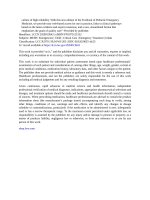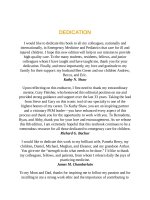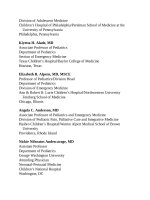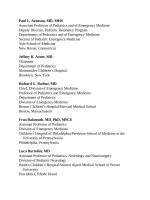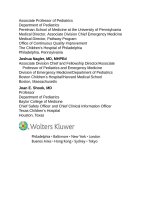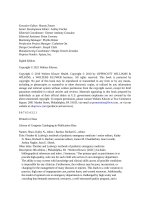Pediatric emergency medicine trisk 0826 0826
Bạn đang xem bản rút gọn của tài liệu. Xem và tải ngay bản đầy đủ của tài liệu tại đây (74.92 KB, 1 trang )
rhinorrhea) and retinal abnormalities (hemorrhage or papilledema) should be
noted. All children with depressed mental status or neck pain should have
cervical spine immobilization maintained at least until its integrity has been
confirmed radiographically; one should note cervical abrasions, deformity, or
tenderness—findings that may indicate underlying cervical spine injuries.
Neurologic examination encompasses assessment of the child’s mental status,
as well as cranial nerve, motor, sensory, cerebellar, and reflex functions. Serial
examinations are important in the child with head trauma to document
improvement or deterioration. The GCS is a convenient way to quantify the level
of consciousness and monitor neurologic progression. The GCS rates patient
performance in three areas: eye opening, verbal ability, and motor ability. It also
assesses the level of alertness, mentation, and major CNS pathways ( Table 41.1
); an individual’s score may range from a low of 3 to a high of 15. The score has
been modified for more age-appropriate behaviors in infants ( Table 41.2 ).
Although TBIs are more common in a child with a low GCS score, even a child
with a GCS score of 15 may harbor potentially life-threatening complications of
head trauma (e.g., EDH), especially if neurologic abnormalities are present.
Further evaluation of mental status includes assessing orientation and memory.
Subtle signs (irritability and high-pitched cry) may be indicative of underlying
abnormalities in infants.
